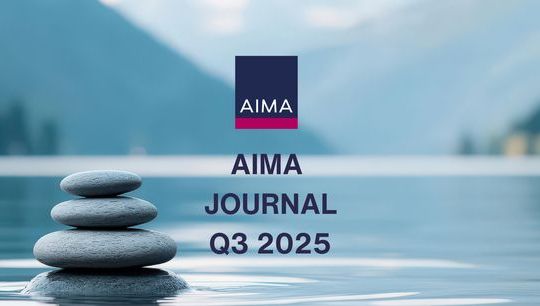The way forward: How firms can meet their SFDR obligations with less disruption
By Steve Barnes, CTO , AQMetrics
Published: 28 June 2021
The environmental, social and governance (ESG) revolution in Europe reached a pivotal moment earlier this year as the Sustainable Finance Disclosure Regulation (SFDR) regime finally went live on 10 March 2021. Years in the making, the sweeping new rules involve disclosure requirements at firm and fund levels (for UCITS and alternative investment funds), and hope to prevent greenwashing within the ESG fund industry.
So far, SFDR has required funds and products to have been categorised (non-green, light green or dark green), firm-wide sustainability considerations have been deliberated, and disclosures and marketing materials have all been updated to reflect the SFDR disclosure.
But, for firms with light and dark green funds (up to 21% of all funds across Europe, according to Morningstar research[1]), the hard work has just begun; they now have only a few short months before the EU Taxonomy goes live on 1 January 2022. This will soon require ESG firms to assess how aligned their investments are with the sustainability activities within the Taxonomy.
This presents challenges and opportunities, with the European Fund and Asset Management Association (EFAMA) recently calling for a transitional period and a one-year delay to the deadline.[2]
Another consideration for market participants is that the level-two 2 rules haven’t been finalised (although the draft rules have been published), and ESG ratings are not yet as consistent as credit ratings or other ratings houses.
As many commentators have noted, successful ESG data sourcing and aggregation remains the key task for any successful SFDR implementation, with firms now looking at ways to optimise data management to make sure that their funds are aligned with the SFDR and EU Taxonomy.
Given this, AQMetrics examines the data challenges that firms in Europe currently face, and explores how technology platforms can provide an end-to-end solution, not only for data management, but also for ESG impact assessment, monitoring and reporting.
Sourcing ESG Data
For light and dark green funds, the SFDR requires these firms to measure — against the Taxonomy — the ESG implications of every asset in the portfolio. Individual investments must be ranked according to their alignment, and an overall alignment score will also be given to the portfolio.
It’s worth noting that this challenge will become somewhat easier in 2022, when large companies (over 500 employees) subject to the EU Non Financial Reporting Directive (NFRD) must provide Taxonomy-aligned non-financial disclosures. Even then, though, the disclosures will only apply to bigger ‘blue chip’ companies, and won’t include smaller or overseas companies, providing scant relief for ESG funds invested in smaller or niche investments.
So, what should firms do?
The first option is to try and source, manage and aggregate all of the data in-house. Because of the difficulty in assessing the ESG characteristics of every asset and underlying asset in the portfolio, firms will likely rely on ESG data providers to obtain as much relevant data as possible.
Many of these providers have spent the past year or so revamping their products to make sure that their data reflects the EU Taxonomy and SFDR obligations. That’s the good news.
In addition, there is some important progress being made in this area, with ESG ratings likely to become more harmonised in the future. Earlier this year, for instance, the European Securities and Markets Authority (ESMA) called for legislative action on ESG ratings and assessments[3], in a move that should eventually pave the way for more scrutiny and harmonisation.
But until this happens, firms preparing for the level-two rules now will still have to ensure their asset data is weighted, scored and aggregated across the portfolio.
Once all this is done, firms will be better positioned to start running ESG rules and commencing sustainability reporting once the reference period ends on 31 December 2021.
Solving SFDR: the platform approach
For those firms that don’t want to - or can’t - manage and analyse ESG data sets in-house, a platform that applies best practices to data aggregation, ESG rules and sustainability reporting can help meet this emerging regulation.
In fact, leading regulatory technology firms and other market participants are launching purpose built SFDR solutions to provide their clients with reporting-ready ESG data sets. Many platforms will source and licence multiple ESG data sets, eliminating the need for firms to integrate directly with one or more ESG data vendors. .
An SFDR-ready platform should be able to easily analyse and classify vast swathes of data (including unstructured text) to derive the scope of ESG impacts, and weight and compare them in such a way that can easily calculate an overall Taxonomy alignment score for an investment.
Once the ESG score is calculated by the platform, pre-built sustainability rules are executed on a scheduled basis. Any changes to the portfolio are continuously assessed for the ESG impact and risk. Sustainability rules aligned with SFDR taxonomies can be further supplemented with rules built by the firms themselves. This combination of regulatory-driven rules and firm or investor ESG rules gives a level of ESG risk and impact assessment over and beyond the basic regulatory requirement.
Compliance processes, meanwhile, can be enhanced for SFDR with an AI-enabled workflow encompassing alert management, what-if scenario analysis and stress testing. The workflow should track trends and detect patterns over time, providing insights back to the firm and its investors on how the ESG score of the portfolio is evolving over time.
The SFDR reporting framework should include real-time dashboards containing investment rankings, concentration risk and benchmark trend analysis. Structured reports can be generated and disseminated to the board and directly to the firm’s investors.
A single platform will also enable firms to track exactly how ESG data was sourced, weighted and aggregated — an important requirement under SFDR. With full data traceability, firms can rest assured that they’re fully aligned with the Taxonomy and meeting the level-two rules under the SFDR.
Finally, a single platform should give firms greater flexibility and improved operational resilience, while future proofing their sustainability reporting. Since certain aspects of SFDR are still to be finalised, a platform built to handle regulatory change can adapt as the finalised regulations emerge and mature over the coming months.
Now is the time for firms to focus on getting their platform strategy right. Having confirmed what products are in and out of scope when it comes to the EU Taxonomy, it’s time to consider the overall data management and how the taxonomy alignment, ESG risk impact scoring and sustainability reporting will integrate within the firm’s compliance framework.
Finding a platform with proven methodologies for regulatory monitoring, oversight and control might just be the way forward.
[1] Sara Silano, ‘Finding ESG Funds Just Got Easier’, 6 April 2021, available at: https://www.morningstar.co.uk/uk/news/211061/finding-esg-funds-just-got-easier.aspx
[2] EFAMA, ‘EFAMA replies to ESA’s consultation on taxonomy-related sustainability disclosures in SFDR, 18 May 2021, available: https://www.efama.org/index.php/newsroom/news/efama-replies-esa-s-consultation-taxonomy-related-sustainability-disclosures-sfdr
[3] ESMA, ‘ESMA Calls for Legislative Action on ESG Ratings and Assessment Tools,’ 29 January 2021, available at: https://www.esma.europa.eu/press-news/esma-news/esma-calls-legislative-action-esg-ratings-and-assessment-tools









